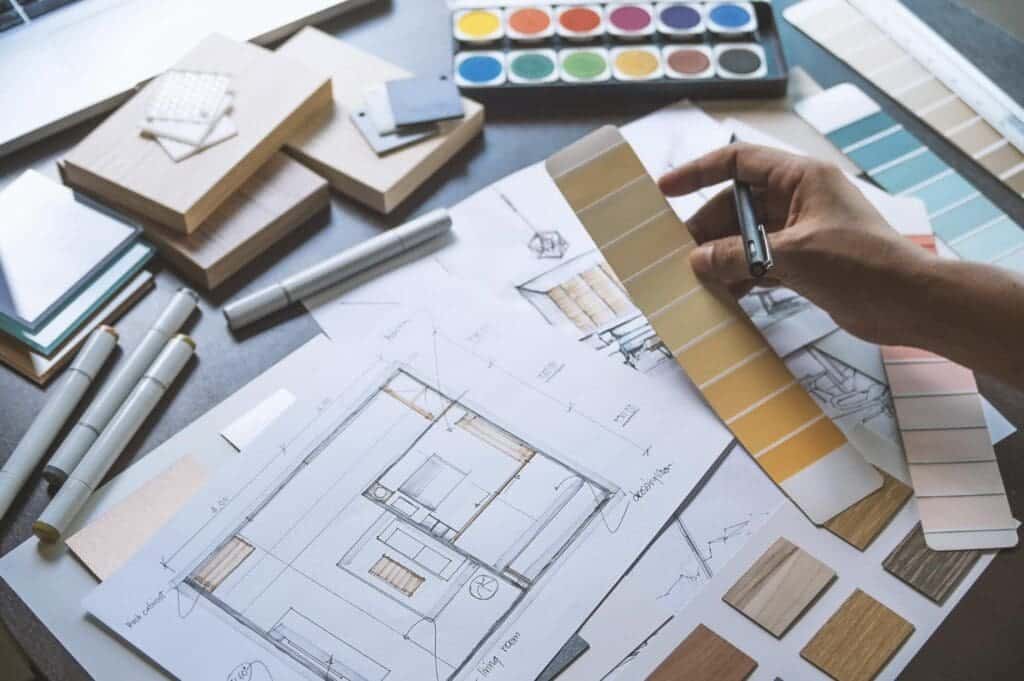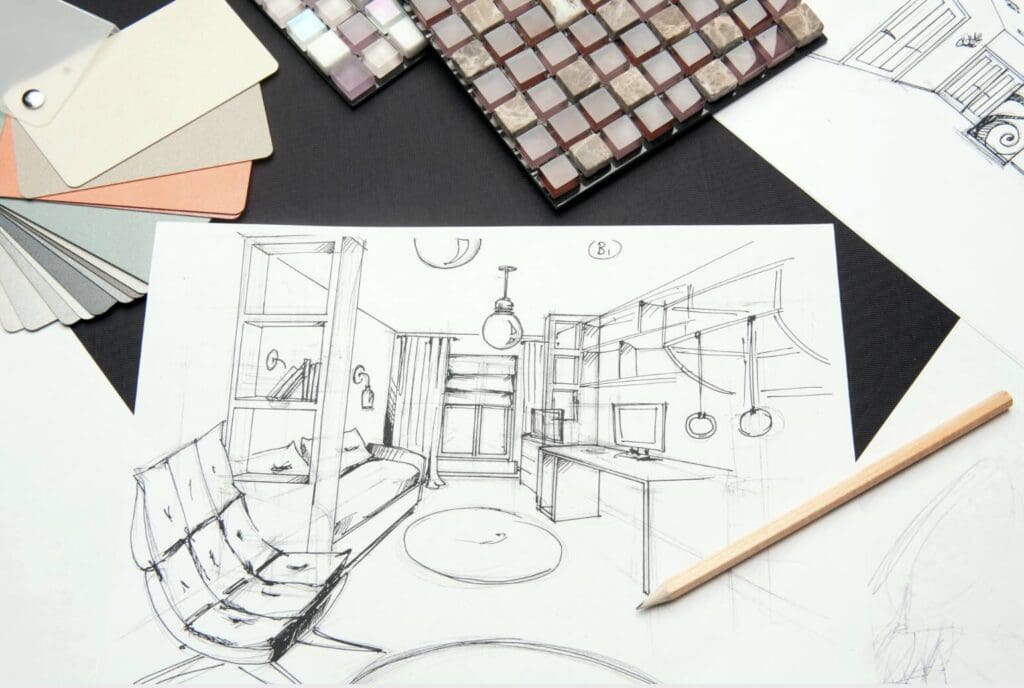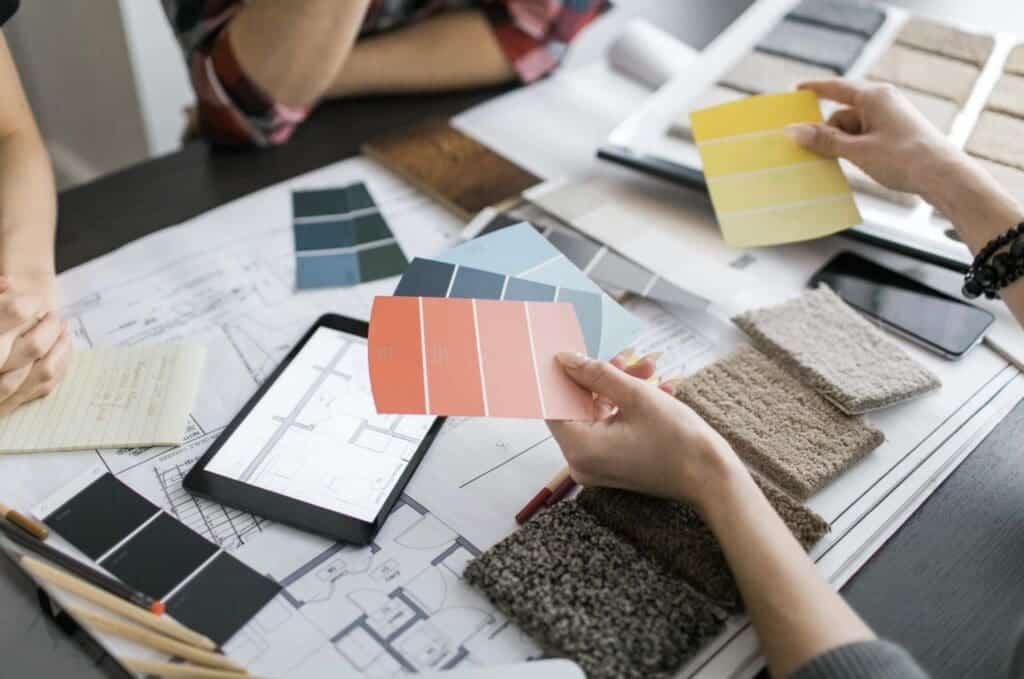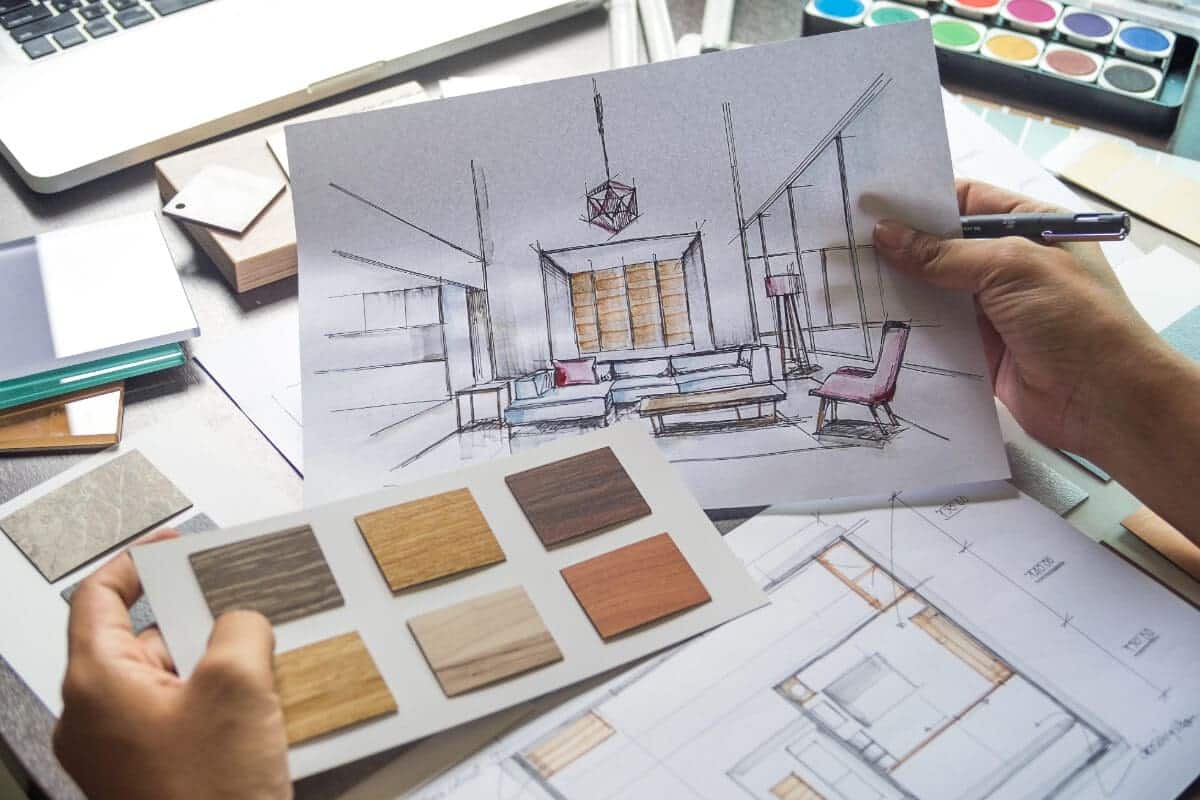Stepping into the world of Interior Design unlocks a sense of wonder at the art of creating living spaces that reflect not only the individual’s personality but also the spirit of an era and the essence of numerous cultures.
This exploration is not solely a tribute to aesthetic appeal but an acknowledgment of its role in shaping our daily experiences and comfort. Consider this journey as sowing the seed of Interior Design understanding and nurturing it with key design elements and principles, unique characteristics of varied styles, and the historical roots of celebrated designs as we embark on understanding the world of Interior Design.
Table of Contents
- The Essence of Interior Design
- Different Styles in Interior Design
- Design Elements & Principles
- Famous Interior Design Styles and Their Origin
- Related Content
The Essence of Interior Design
Interior design, at its essence, is more than just about making spaces look beautiful – believe it or not, it’s a harmonious blend of creativity and science! Interior design aims to enhance a space’s aesthetics and improve its function, ergonomics, and overall quality of life for inhabitants.
The mind directly jumps to lavish homes and posh commercial spaces in magazines when discussing interior design. However, design is everywhere – from the most humble homes to grand museums, every built environment is a product of design decisions. This hobby of crafting environments revolves around utilizing the space most profitably and effectively and then filling it with suitable fixtures and furnishings to create one cohesive, functional, and harmonious environment.
Good interior design is all about balance. Using color, texture, and form in just the right proportions creates spaces that look and feel fantastic. It’s about creating that perfect balance between aesthetics and functionality, which isn’t always easy.
Interior design fans know it’s not just about picking out pretty sofas or nailing the right paint color—it also involves knowledge of materials, structures, and even building codes. Each design decision has a ripple effect, impacting other aspects of the project—a change in flooring could affect room acoustics, while a change in wall color could affect lighting needs.
Among the critical aspects of interior design are mood, theme, and personality. These are expressed through carefully selecting color schemes, furnishings, lighting fixtures, textiles, artwork, and other design elements. All of it should reflect the personality and tastes of those who use the space.
Also important to highlight in the core understanding of interior design are the design principles of balance, rhythm, contrast, emphasis, and scale and proportion. These principles apply to everything from a building layout to the smallest decorative detail. For instance, a room with evenly distributed weight (balance), a logical pattern or sequence (rhythm), striking elements that add interest or drama (contrast and emphasis), and a sense of unity wherein all elements are in harmony with one another (scale and proportion), is visually pleasing and comfortable to be in.
The process of designing an interior space involves a lot more than just vision and creativity. It can be a long process demanding patience, as it requires carefully integrating countless elements and considerations – from the drawing board to the final implementation.
In conclusion, interior design is a fascinating world where art, architecture, and human psychology intersect. It’s about creating spaces that look great and, more importantly, feel right. This is the magic of interior design, a hobby that transforms houses into homes and offices into productive, inspiring workplaces.

Different Styles in Interior Design
Interior design is an impressive amalgamation of creativity and functionality. From color palettes and textiles to spatial planning, every aspect of interior design has the potential to emanate a unique theme or style.
Themes are the heart and soul of every design project. Whether envisaging a fresh, modern appeal or conjuring vintage grandeur, each design theme is marked by its distinctive use of colors, textures, patterns, and shapes. Contemporary style, for example, is characterized by its fluidic, streamlined design elements, favoring neutral and earthy color themes. On the other hand, a gothic design theme would typically boast robust, ornate detailing with darker and bolder colors.
Distinct styles often embody geographical influences, periods, and socio-cultural underpinnings. Take the timeless and elegant Moroccan style, for example. It displays an exciting array of richly hued fabrics, intricate tile work, and carved wood elements, narrating tales of its vibrant culture and history. Similarly, Asian-inspired styles often reflect a profound reverence for nature, manifest in furnishings, walls, ceilings, and accessories.
The Scandinavian design style also prides itself on simplicity and functionality, exuding an inviting warmth through its muted tones and use of natural materials like wood, wool, and felt. Meanwhile, the industrial design style is a testament to urban, utilitarian aesthetics, with raw, exposed brick walls and structures, subdued colors, and heavy metallic elements.
So you see, textures and colors are not mere enhancements; they play a central role in determining and enlivening a design theme. A furniture piece upholstered in luxurious velvet or simple linen can introduce an element of lush or minimalist chic in space. Likewise, colors can do wonders, impacting the overall ambiance of interior space. A splash of pastel can evoke calm and tranquility, while bright pops of color can infuse vibrancy and energy.
Lighting often goes unappreciated amid all the color and decor frenzy but plays an instrumental role in setting the mood and tone of a space. Depending on its intensity and direction, lighting can highlight or downplay certain design elements, contributing to the overall theme.
Shift your gaze up, and you’ll find ceilings brimming with potential! From coffered to tray to beam, various ceiling design styles can dictate the overall decor theme of your space.
Let’s not overlook the impact of different architectural elements on a design style. Arched doorways, for example, can instantly usher a Mediterranean charm into space, while significant, floor-to-ceiling windows are a signature modern design element offering openness and a seamless indoor-outdoor transition.
Conclusively, the world of interior design is eclectic and ever-evolving. Every theme, every style has a story to unfold, a character to bring forth. Every element contributes to breathing life into these stories, from palettes and materials to architectural features. So go on, uncover these excellent narratives hiding in the nooks and crannies of interior design, and who knows? You might discover a theme or style that resonates with you!

Design Elements & Principles
Having a deeper understanding of the different themes in interior design can usher one into a world of fascinating and diverse aesthetics. Each design theme possesses unique characteristics that give life to spaces in different ways, truly a testament to the eclectic nature of interior design.
For instance, contemporary style, often mixed with modern design, sports a cool, almost aloof appeal softened with smooth lines and curved corners. Neutral hues are favored, but splashes of vivid, bold colors are frequently incorporated, subtly breaking the monotony.
In contrast, Gothic design projects a mysterious yet alluring charm—it leans heavily into dark colors, dramatic features, pointed archways, religious elements, and intricate ornamentation. Nevertheless, when approached subtly, it can make a room feel grand, refined, and timeless.
Dramatically different from the above-mentioned styles, Moroccan design draws its essence from its culture—bright, colorful, and earthy. It’s characterized by geometric patterns, tactile textures, layered textiles, and a sea of colors that transports you instantly to North Africa.
Similarly, Asian-inspired styles encompass many themes, each deeply tied to the respective culture and surroundings. The common thread, regardless of whether it’s Japanese Zen, Chinese Feng Shui, or Indian vibrant designs, remains the connection to nature. Earthy tones, organic materials, elemental symbolism, and spatial harmony contribute to this serene, tranquil aesthetic.
Moving further north, Scandinavian design paints a different picture—it’s renowned for its simplicity, functionality, and minimalism. The balance between form and function is critical, with light-finished wood, neutral tones, and plush, tactile fabrics creating a warm, cozy atmosphere.
The industrial style embraces rawness. With its exposed brick, cement, weathered wood, and metal accents, it replicates the rugged aesthetic of urban loft spaces. Its inherently utilitarian aspect invites a juxtaposition of the unfinished with refined, polished elements.
Textures and colors significantly impact how spaces are perceived and experienced. Their interplay can evoke myriad moods and themes, from the serene to the wealthy. Equally, the play of lighting can set the mood and tone of a space—downlights can add drama, while soft, ambient light creates a warm, inviting glow.
Looking up shouldn’t be an afterthought, as ceiling design can significantly influence the decor theme. Featured ceilings, from coffered to beamed, from vaulted to tray style, can become the unexpected focal point, accentuating the room’s height and elevating the aesthetic.
Architectural elements also have a significant role in design styles. Fireplaces, moldings, staircases, windows, doors—a room’s built structures can dictate or enhance a chosen style. They become the canvas upon which interior design’s expressive artistry unfolds.
Ultimately, interior design is an ever-evolving field, constantly stretching to accommodate new technologies, lifestyle changes, and cultural influences. Its nature is such that it encourages pushing boundaries, experimenting, and, most importantly, personal expression. Whether minimalist or Maximalist, Japanese Wabi-sabi or French Country, every style has its charms and design intricacies, and every space has the potential to resonate with your unique design voice!
Famous Interior Design Styles and Their Origin
Delving into the World of Interior Design Styles
Few people ponder the origin of interior design styles and the history and cultural stories that gave birth to these design trends. But by understanding the roots, designers and enthusiasts can appreciate the depth and richness these styles carry, adding a new dimension of beauty to interior spaces. This piece aims to serve as a wellspring of knowledge, shedding light on the often-forgotten beginnings of various popular interior design styles.
Starting with the Mid-Century Modern design style that we’ve all come to know and love. Born in the post-World War II era, the Mid-century Modern design captures the essence of an era known for incredible technological advancements. It exudes a simple yet functional aesthetic characterized by organic shapes, clean lines, and minimal ornamentation. The style reflects an era of optimism, mirroring the sentiment of the time – a time of change, growth, and hope for a better future.
Another style with an exciting root is Bohemian design. Stemming from the Boheme of the late 19th century, Bohemian design embraces the free-spirited, unconventional lifestyle of artists, writers, and actors of the time. It’s all about mixing and matching, creating an eclectic and expressive space with personality, culture, and color.
Delving into less contemporary styles, the Victorian design style offers an eye feast. Named after Queen Victoria’s reign in Britain between 1837 and 1901, the style exudes opulence and grandeur. Notable characteristics of this style include rich, dark colors, detailed wall textures, and ornate furnishings – a nod to the wealth and luxury of the Victorian era.
Another quite famous style is the Shaker design. The Shaker style has its roots in a religious group that migrated from England to America in the late 18th century. The Shakers’ design reflected their faith, emphasizing honesty, simplicity, and utility. Hence, the Shaker interior design style is characterized by its clean lines, handcrafted wooden furniture, and practicality.
Finally, the Art Deco design style emerged from the glitz and glamor of Paris in the early 20th century. Art Deco design is an amalgamation of “Arts Decoratifs” inspired by the Industrial Revolution and ancient civilizations. This style’s exclusivity lies in its geometric patterns, bold colors, and ornate detailing – creating genuinely fabulously lavish spaces, echoing the extravagant spirit of the Roaring ‘20s.
Indeed, each interior design style narrates a unique story—a testament to its birth era, reflecting social, cultural, and technological contexts. Whether you are an interior design professional, enthusiast, or someone considering revamping your living room, appreciating these styles and their rich backgrounds will undoubtedly add another layer of depth and beauty to your creations. After all, each space we design is a canvas to tell a tale – an ancient period, a bygone era, or the story of the people inhabiting it.

Indeed, interior design is not merely a craft but a language, a historical record, and a reflection of our lives. Understanding the fundamental elements, principles, and various styles is akin to gaining fluency in this language.
Absorbing the histories of popular styles allows us to appreciate the influences that have shaped the designs we see today. Ultimately, learning about interior design means perceiving the world with a nuanced lens that appreciates the intertwining of form and function, history and culture, and individuals and their spaces.
Find out more about how Mondoro can help you create, develop, and manufacture excellent home decor and furniture products – don’t hesitate to contact me, Anita. Check out my email by clicking here or become a part of our community and join our newsletter by clicking here.
Mondoro gives out a FREE Lookbook to anyone interested. You can receive a copy of our latest Lookbook by clicking here.
Listen to our Podcast called Global Trade Gal. You can find it on all major podcast platforms. Try out listening to one of our podcasts by clicking here.
Subscribe to our Mondoro Company Limited YouTube Channel filled with great videos and information by clicking here.
Related Content
Difference Between Solid Sheesham Wood, And Teak Wood
Solid Sheesham Wood and Teak Wood are both very different kinds of woods. Even though they are both considered hardwoods, Sheesham wood is softer than teak. Sheesham wood is also considered less durable than teak wood. Many premier manufacturers consider teak wood the ”king of woods.”
You can discover more by reading Difference Between Solid Sheesham Wood, And Teak Wood by clicking here.
Is Teak a Coniferous, Evergreen, or Deciduous Tree? 11 Teak Wood Facts
Teak is a deciduous, not evergreen or coniferous tree. Teak leaves do not fall off in the wintertime, but they fall off in the dry season; in Asia, where teak trees are naturally grown, the dry season is not always the same as winter. As the teak leaves do fall off, the tree is considered to be a deciduous tree.
You can discover more by reading our blog Is Teak a Coniferous, Evergreen, or Deciduous Tree? 11 Teak Wood Facts by clicking here.
What Are The Types Of Wood Used In Furniture?
Wood for furniture is divided up into hard and softwood. Though the woods have some similarities, they also have some differences. Different looks and types of furniture may require a certain kind of wood. Some wood species will be higher priced, and others will be cheaper; price, durability, look, color, finish, and structure can decide what wood to choose for your furniture piece.
You can discover more by reading our blog What Are The Types Of Wood Used In Furniture? by clicking here.

